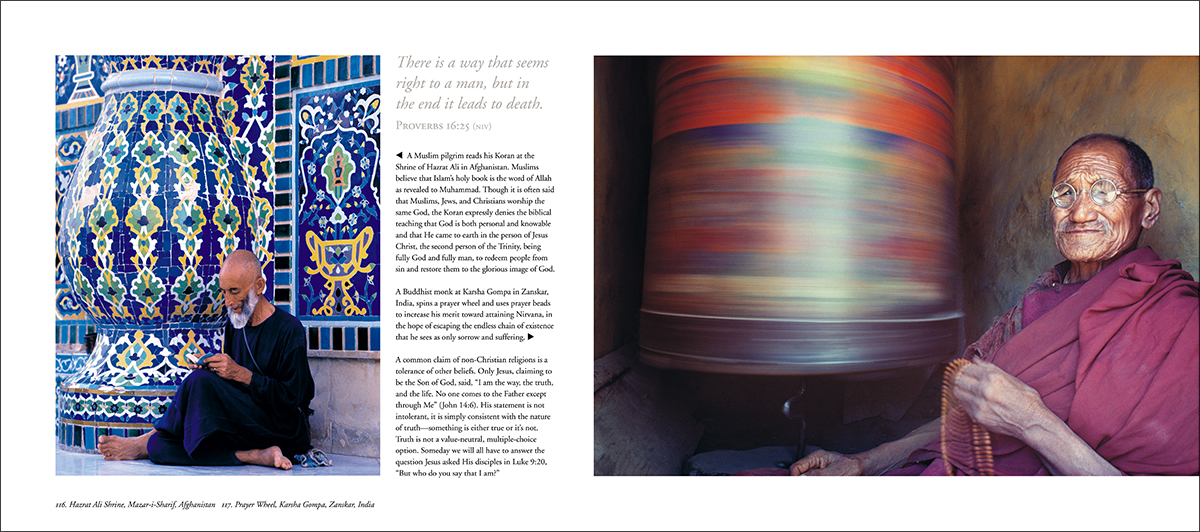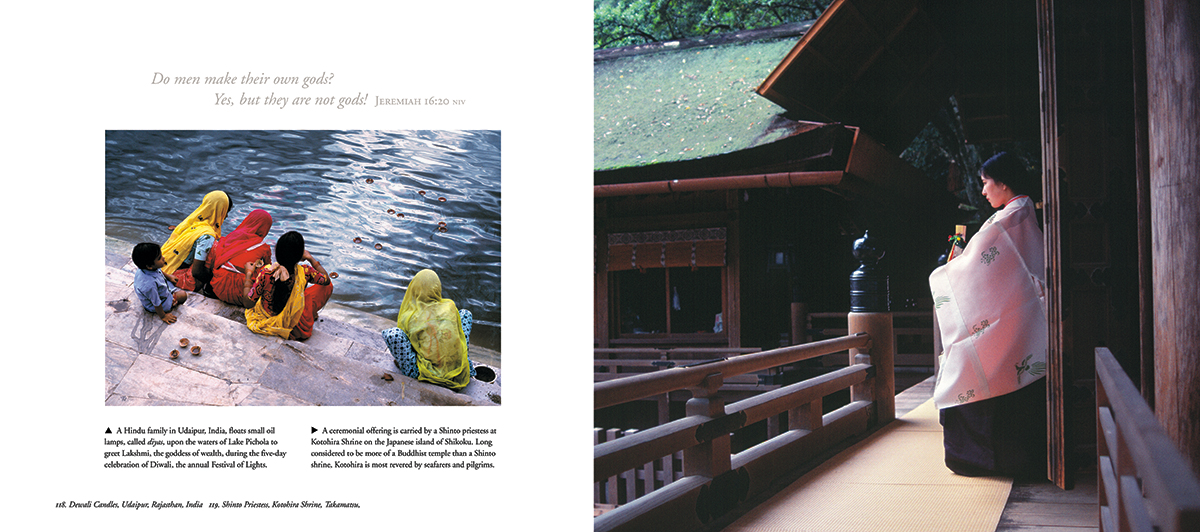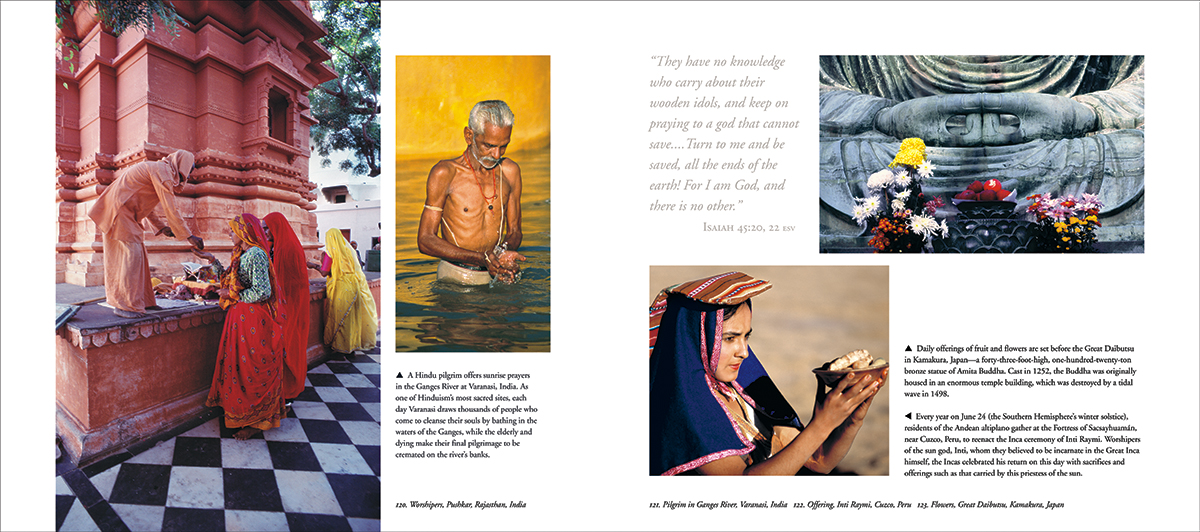Man Praying, Swat Valley, Pakistan
The LORD God took the man and put him in the garden of Eden to tend and keep it. And the LORD God commanded the man, saying, “Of every tree of the garden you may freely eat; but of the tree of the knowledge of good and evil you shall not eat, for in the day that you eat of it you shall surely die.” Genesis 2:15-17
God gave Adam the special task of guarding the garden, which he would do by trusting and obeying God’s commands. God gave him permission to eat freely of all the trees, including the tree of life, but warned him to abstain from eating from the tree of the knowledge of good and evil, lest he die. Eating from the tree of life, Adam would affirm that God was trustworthy and that Adam was willing to submit to His authority.
However, if he ate from the tree of the knowledge of good and evil, it would be a declaration that he wasn’t willing to trust God, that he didn’t need God for life, and that he could depend on himself for true knowledge about the world. At the heart of guarding the garden was protecting the distinction between the Creator and the creature, between God and Adam—God was God and Adam was not.
Adam also had a responsibility to protect Eve by teaching her about the trees and leading her to worship according to God’s command, because Eve was created after God warned Adam about the tree of the knowledge of good and evil.
There is a way that seems right to a man, but in the end it leads to death. Proverbs 16:25 (niv)

Hazrat Ali Shrine, Mazar-i-Sharif, Afghanistan — Prayer Wheel, Karsha Gompa, Zanskar, India
A Muslim pilgrim reads his Koran at the Shrine of Hazrat Ali in Afghanistan. Muslims believe that Islam’s holy book is the word of Allah as revealed to Muhammad. Though it is often said that Muslims, Jews, and Christians worship the same God, the Koran expressly denies the biblical teaching that God is both personal and knowable and that He came to earth in the person of Jesus Christ, the second person of the Trinity, being fully God and fully man, to redeem people from sin and restore them to the glorious image of God.
A Buddhist monk at Karsha Gompa in Zanskar, India, spins a prayer wheel and uses prayer beads to increase his merit toward attaining Nirvana, in the hope of escaping the endless chain of existence that he sees as only sorrow and suffering.
A common claim of non-Christian religions is a tolerance of other beliefs. Only Jesus, claiming to be the Son of God, said, “I am the way, the truth, and the life. No one comes to the Father except through Me” (John 14:6). His statement is not intolerant, it is simply consistent with the nature of truth—something is either true or it’s not. Truth is not a value-neutral, multiple-choice option. Someday we will all have to answer the question Jesus asked His disciples in Luke 9:20, “But who do you say that I am?”
Do men make their own gods? Yes, but they are not gods! Jeremiah 16:20 niv

Dewali Candles, Udaipur, Rajasthan, India — Shinto Priestess, Kotohira Shrine, Takamatsu, Japan
A Hindu family in Udaipur, India, floats small oil lamps, called diyas, upon the waters of Lake Pichola to
greet Lakshmi, the goddess of wealth, during the five-day celebration of Diwali, the annual Festival of Lights.
A ceremonial offering is carried by a Shinto priestess at Kotohira Shrine on the Japanese island of Shikoku. Long considered to be more of a Buddhist temple than a Shinto shrine, Kotohira is most revered by seafarers and pilgrims.
“They have no knowledge who carry about their wooden idols, and keep on praying to a god that cannot save….Turn to me and be saved, all the ends of the earth! For I am God, and there is no other.” Isaiah 45:20, 22 esv

Worshipers, Pushkar, Rajasthan, India — Pilgrim in Ganges River, Varanasi, India — Offering, Inti Raymi, Cuzco, Peru — Flowers, Great Daibutsu, Kamakura, Japan
A Hindu pilgrim offers sunrise prayers in the Ganges River at Varanasi, India. As one of Hinduism’s most sacred sites, each day Varanasi draws thousands of people who come to cleanse their souls by bathing in the waters of the Ganges, while the elderly and dying make their final pilgrimage to be cremated on the river’s banks.
Daily offerings of fruit and flowers are set before the Great Daibutsu
in Kamakura, Japan—a forty-three-foot-high, one-hundred-twenty-ton bronze statue of Amita Buddha. Cast in 1252, the Buddha was originally housed in an enormous temple building, which was destroyed by a tidal wave in 1498.
Every year on June 24 (the Southern Hemisphere’s winter solstice), residents of the Andean altiplano gather at the Fortress of Sacsayhuamán, near Cuzco, Peru, to reenact the Inca ceremony of Inti Raymi. Worshipers of the sun god, Inti, whom they believed to be incarnate in the Great Inca himself, the Incas celebrated his return on this day with sacrifices and offerings such as that carried by this priestess of the sun.

